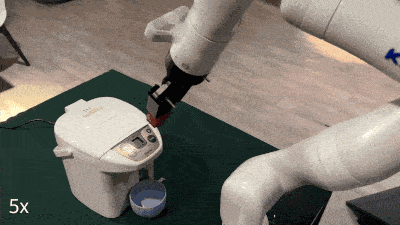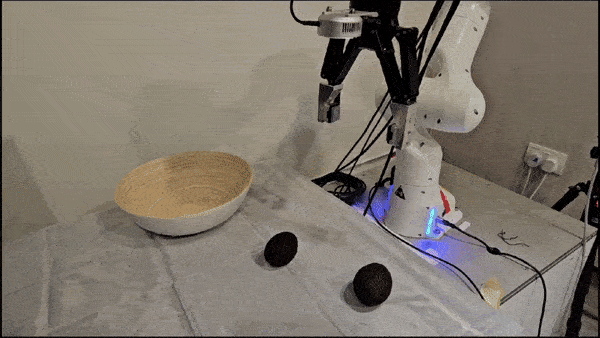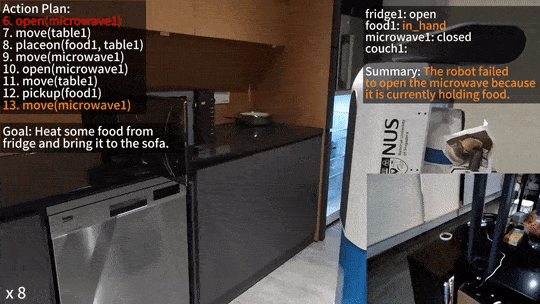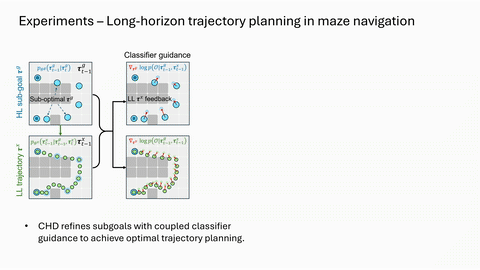RESEARCH
My research interests lie in developing both general-purpose algorithms and specialized autonomous systems for service robots, including planning, human-robot interaction, and service robot design. I aim to bridge the gap between robotics research and its real-world applications in socially aware scenarios.
My long-term research goal is to develop deployable service robotic systems capable of operating in open-world environments. I define the open world as one characterized by (1) natural and unconstrained human behavior, (2) incomplete environmental knowledge at both the semantic and geometric levels, and (3) unknown environmental structures populated with novel objects.
To tackle the challenges of open-world operation, I adopt the system design grounded in compositionality and modularity. I explore structured representations that link semantic concepts with their grounding in the physical world. At the low level, I develop robust navigation and manipulation systems that passively tolerate unforeseen objects and environments. At the high level, I design systems and algorithms that actively expand the robot's representations and models, and incorporate human presence at both levels.
Open-world Interaction
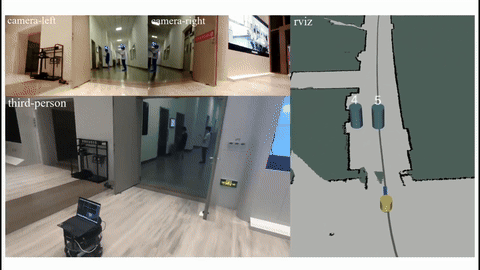
GSON: A Group-based Social Navigation Framework with Large Multimodal Model
IEEE Robotics and Automation Letters (RA-L) 2025.
Shangyi Luo, Peng Sun, Ji Zhu, Yuhong Deng, Cunjun Yu, Anxing Xiao (Mentor), Xueqian Wang
TL;DR: Group-aware social navigation using large multimodal models for socially-aware robot motion.
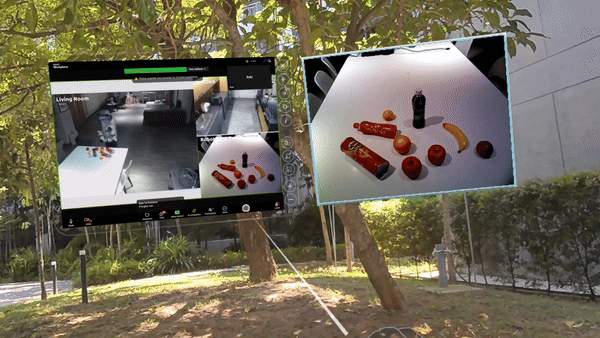
Robi Butler: Multimodal Remote Interactions with a Household Robot Assistant
IEEE International Conference on Robotics and Automation (ICRA) 2025.
Anxing Xiao, Nuwan Janaka, Tianrun Hu, Anshul Gupta, Kaixin Li, Cunjun Yu, David Hsu
TL;DR: Remote multimodal (language + gesture) interactions with household robots.
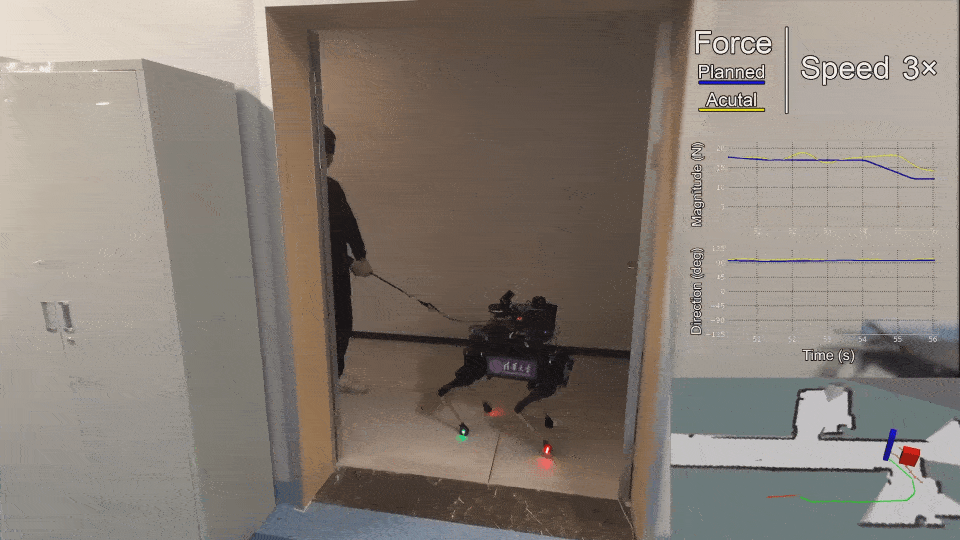
Quadruped Guidance Robot for the Visually Impaired: A Comfort-Based Approach
IEEE International Conference on Robotics and Automation (ICRA) 2023.
Yanbo Chen, Zhengzhe Xu, Zhuozhu Jian, Gengpan Tang, Yunong Yangli, Anxing Xiao (Mentor), Xueqian Wang, Bin Liang
TL;DR: Comfort-based guidance that safely leads visually impaired users through complex environments.
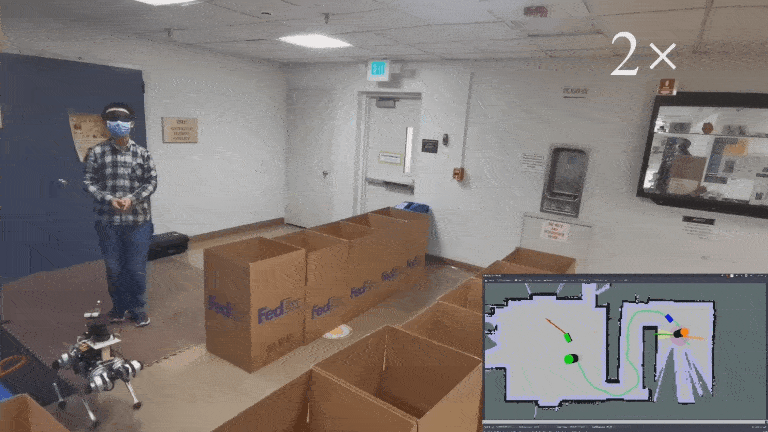
Robotic Guide Dog: Leading a Human with Leash-Guided Hybrid Physical Interactions
IEEE International Conference on Robotics and Automation (ICRA) 2021.
Anxing Xiao, Wenzhe Tong, Lizhi Yang, Jun Zeng, Zhongyu Li, Koushil Sreenath
ICRA Best Paper Award Finalist for Service Robotics.
TL;DR: The world's first robotic guide dog that can lead visually impaired to safely travel in a confined space.
Open-world Reasoning
Open-world Capability
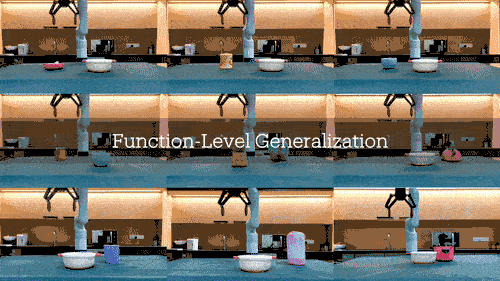
MimicFunc: Imitating Tool Manipulation from a Single Human Video via Functional Correspondence
Conference on Robot Learning (CoRL) 2025.
Chao Tang, Anxing Xiao, Yuhong Deng, Tianrun Hu, Wenlong Dong, Hanbo Zhang, David Hsu, Hong Zhang
TL;DR: Learn tool-use from a single human video via functional correspondence.

Robotic Autonomous Trolley Collection with Progressive Perception and Nonlinear Model Predictive Control
IEEE International Conference on Robotics and Automation (ICRA) 2022.
Anxing Xiao*, Hao Luan*, Ziqi Zhao*, Yue Hong, Jieting Zhao, Jiankun Wang, Max Q-H Meng
TL;DR: Compact robot collects unmarked trolleys in dynamic, complex environments.
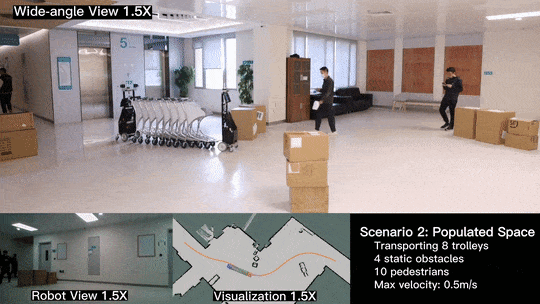
Collaborative Trolley Transportation System with Autonomous Nonholonomic Robots
IEEE/RSJ International Conference on Intelligent Robots and Systems (IROS) 2023.
Bingyi Xia, Hao Luan, Ziqi Zhao, Xuheng Gao, Peijia Xie, Anxing Xiao (Mentor), Jiankun Wang, Max Q-H Meng
TL;DR: Multi-robot system for collaborative trolley transportation in crowded spaces.

PUTN: A Plane-fitting based Uneven Terrain Navigation Framework
IEEE/RSJ International Conference on Intelligent Robots and Systems (IROS) 2022.
Zhuozhu Jian, Zihong Lu, Xiao Zhou, Bin Lan, Anxing Xiao (Mentor), Xueqian Wang, Bin Liang
TL;DR: Plane-fitting based navigation for effective traversal on uneven terrain.
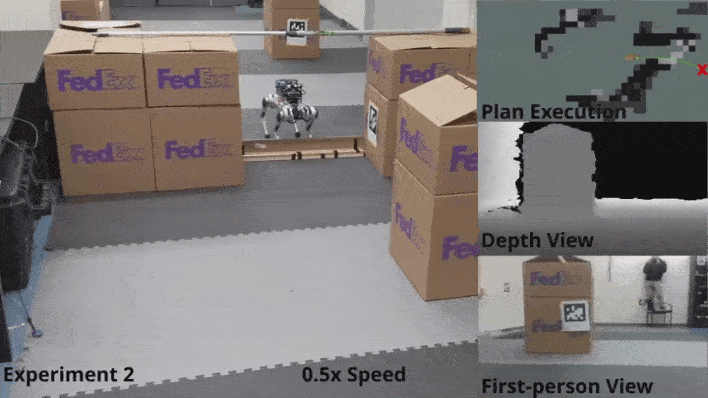
Autonomous Navigation with Optimized Jumping through Constrained Obstacles on Quadrupeds
IEEE Conference on Automation Science and Engineering (CASE) 2021.
Scott Gilroy, Derek Lau, Lizhi Yang, Ed Izaguirre, Kristen Biermayer, Anxing Xiao, Mengti Sun, Ayush Agrawal, Jun Zeng, Zhongyu Li, Koushil Sreenath
TL;DR: Enable quadrupeds to jump through window-shaped obstacles during navigation.
